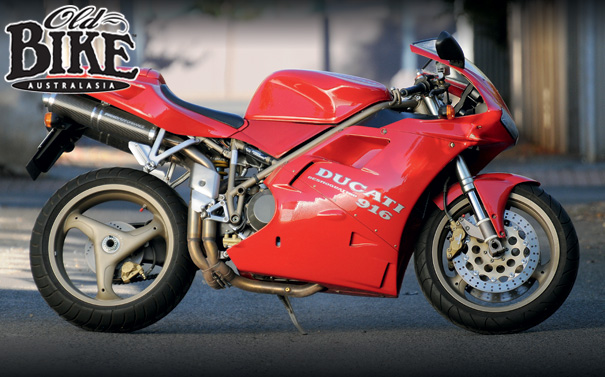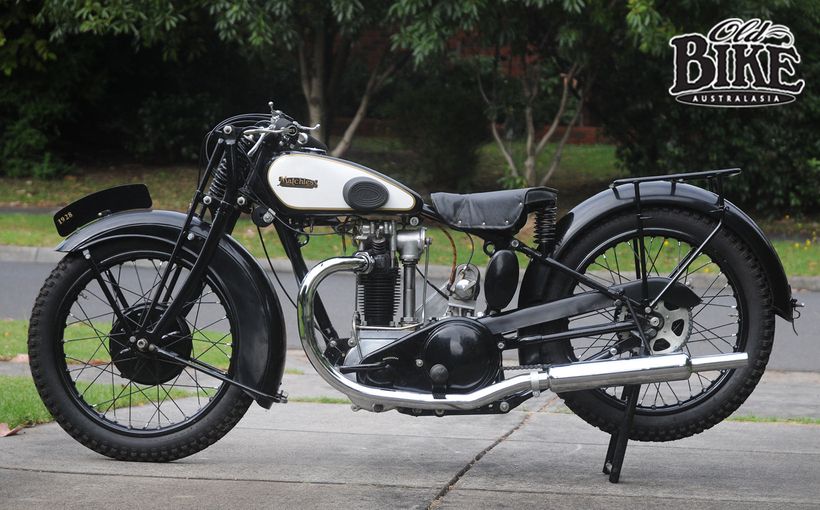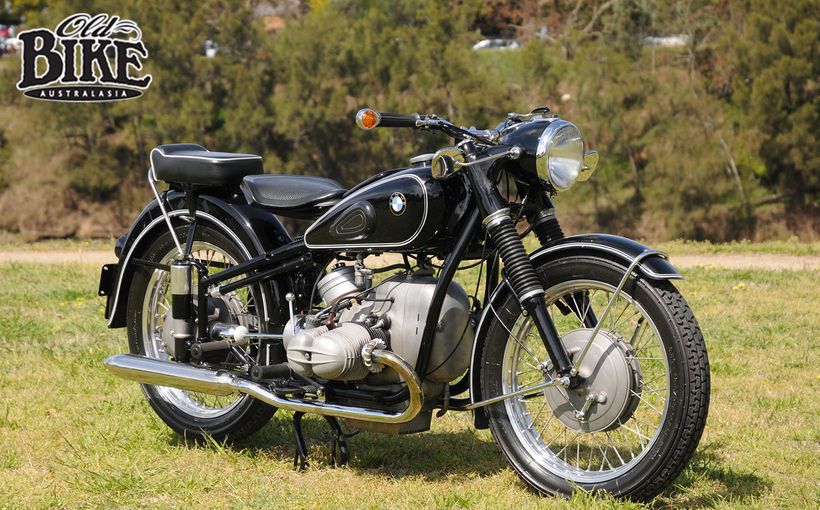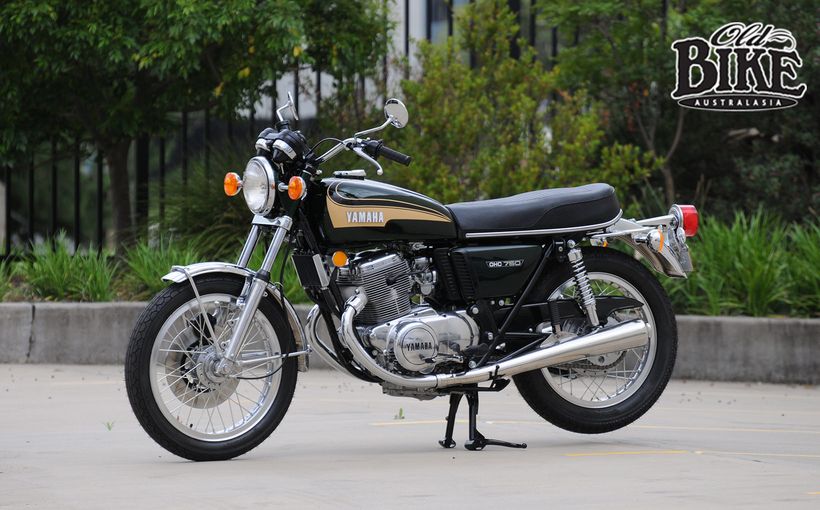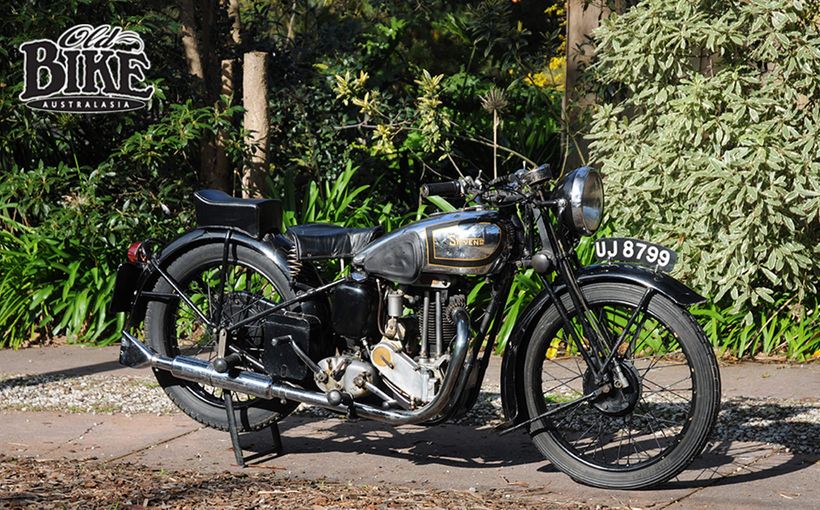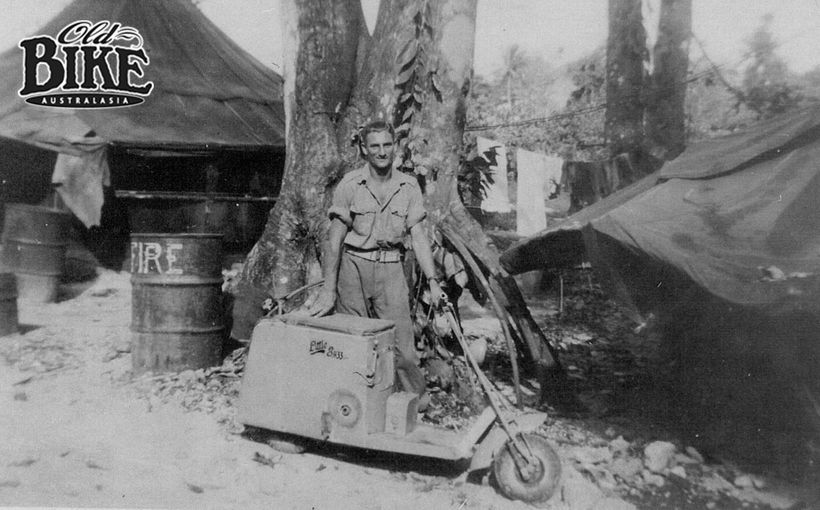Old Bike Australiasia: Ducati 916 - Tamburini’s Masterpiece

But in this case, underneath the svelte exterior was a total package; a new chassis, much improved engine, and refinements that would appeal to riders like no other Ducati before. Had it not succeeded, Ducati may not still be with us today, but the 916 was the masterstroke that took the company from niche to noble – a design that spawned a sea of imitators, and a motorcycle that looks as good today as it did 17 years ago. Of course, the 916 had its roots in the 4-valves per cylinder concept that started out with the 851 and 888 models which had proved so successful in the burgeoning World Superbike Championship, but never before had the brand seen a model designed to such a strict set of parameters.
In reality, it was the purchase of Ducati from the state-subsidised VM Group by the Cagiva concern in 1985 that laid the foundations for the 916. Under VM, the Ducati factory’s emphasis had gradually switched from motorcycles to the production of diesel engines, and the future of the brand looked grim. The Castiglioni brothers, Claudio and Gianfranco, who owned Cagiva (an acronym formed from CA= Castiglioni, GI=Giovanni and Va=Varese) which had been founded by their father Giovanni, had made their fortune producing specialised metal components such as locks and latches for suitcases. They ventured into motorcycles in the late 1970s, by which stage the majority of European motorcycle marques had capitulated in the face of the Japanese onslaught. The Castiglionis had other ideas, and in 1979 bought the former Aermacchi factory in Schiranna (Varese) from the US AMF Harley- Davidson company. In the process Cagiva retained the services of (or hired) many skilled personnel who had worked with Aermacchi/H-D or the nearby MV Agusta concern. With an innovative range of small displacement street, enduro and motocross two stroke models, Cagiva stood defiant against the Japanese models, and more than held its ground.
Backed by a strong dealer network pushing demand for their products, the Castiglionis began discussion with Ducati around 1983 for the supply of four-stroke engines in sizes ranging from 350 cc upwards. The first products of the tie-up were the 650 cc Cagiva Elephant and Azlazzurra, both using the Ducati Pantah engine – the first Ducati design to break away from the old bevel-drive system in favour of a toothed rubber belt to drive the single overhead camshaft. Given the disastrous sales of the 350 cc and 500 cc Ducati vertical twins, Fabio Taglioni’s new Pantah had come in the nick of time, and bristled with original thinking. It used the engine as a stressed member of the trellis-style chassis and had the swinging arm pivoting in the rear of the crankcases.

After buying Ducati, Cagiva wasted no time in laying plans for a vastly up-rated V-twin design that would use 4-valve heads – a first for Ducati. Massimo Bordi, who had succeeded Taglioni as the company’s chief engineer, spent the winter months of 1985-1986 in discussions with Cosworth Engineering in the UK, grappling with the problems of compromising the design of the 4-valve head to accommodate the desmo valve gear – the space required for the eight rockers meaning that an included angle of 40º for the valves was the best obtainable, whereas Cosworth, reckoned 30º or less was possible if conventional valve springs were used. Despite the myriad complications (and significant costs) in engineering terms, the abandonment of desmodromic valve gear was simply out of the question for the Castiglionis – it was a signature of Ducati and an exploitable concept in marketing terms, so it stayed.
Although based on the Pantah, the new 4-valve engine boasted liquid cooling and fuel injection and was known as the Desmoquattro. In prototype 748 cc form, and with Pantah crankcases slightly modified with wider stud spaces to take an 88 mm bore, the new unit first appeared at the 1986 Bol d’Or, and performed very well until a broken conrod bolt stopped the effort at the 13 hour mark. Subsequently, the 851 appeared using new, stronger crankcases and a bore and stroke of 92 mm x 64 mm. In March 1987, Marco Lucchinelli took the 115 hp 851 to a resounding victory at the prestigious Battle of the Twins race at Daytona. In 1991 the bore grew by a further 2 mm to create the 888.
As successful as the 851/888 design was (Raymond Roche won the 1990 World Superbike Championship on the works 851 and Doug Polen took the title in 1991 and 1992 on the 888) the road-going versions had become rather bulbous, having evolved over more than a decade of continuous development, although with 100 bhp on tap at 9,000, the 888 was good for 150 mph. The long (1430 mm) wheelbase was also seen as a drawback, with the engine/transmission unit sitting too far to the rear for optimum weight distribution.
Enter the 916
Massimo Tamburini joined Cagiva with an impressive CV. As a co-founder of Bimota (the ‘ta’ in Bimota being the first two letters of his surname), he was well respected for his innovative thinking in chassis design; Bimota frame kits housing numerous Japanese engines as well as Ducati V-twins. One of Tamburini’s first jobs for Cagiva was to design the Paso 750, which broke cover in late 1985 – a revolutionary looking machine (perhaps too revolutionary) that featured fully-enveloping bodywork, a squaresection chrome-moly frame with an aluminium swinging arm, rising rate rear suspension and 16- inch wheels shod with radial tyres. A combination of disappointing performance and a high price tag nobbled the Paso during its four years of production, during which time it sold less than 5,000 units. It was redesigned in 1990 to become the 907IE, with the quirky Weber carburettor replaced by Weber- Marelli electronic fuel injection, giving a much better spread of power and increased power output. Wheel sizes went up to 17 inch, producing a better handling machine. The market remained unconvinced however, and production ceased in 1992.
Since 1984, Tamburini had operated from the Cagiva Design Centre, based in his home town of Rimini, rather than at the Cagiva factory at Varese. The project that would result in the 916 was put into place while Massimo Bordi and his engineers continued work on the 851, not at Rimini, but at the new Cagiva Research Centre based in nearby San Marino – the world’s smallest republic with an area of just 61 square kilometres. Tamburini’s brief was to develop a totally integrated chassis/engine package that could accommodate engines up to 1,000 cc, and which would ultimately produce considerably more power than the 888. Work on the project began in 1988, initially with a team of just five, but the 916 project was only part of their responsibilities which included work on the 500 cc Cagiva Grand Prix machines.
Although Tamburini had experience with all sorts of motorcycle chassis, including aluminium spar frames, it was decided to continue with the tubular steel trellis style with which Ducati had become synonymous. A primary consideration was to address the weight distribution to achieve as close as possible to a 50/50 balance between front and rear – traditionally a problem with the lengthy Ducati powerplant. To shorten the wheelbase and achieve a better steering angle, the engine unit was tilted rearwards 1.5º to lift the front cylinder head away from the front wheel. Larger (28 mm) section tubing was used for the main frame, an extra engine support point was added, and the swinging arm pivoted in the lower frame rails as well as in the rear of the crankcases, producing a much more rigid unit than the 888. The rear frame section was constructed from aluminium-alloy. The whole exercise shortened the wheelbase a useful 20 mm to 1,410 mm. Beneath the fuel tank and between the widely-splayed top frame tubes sat a new airbox, with the lower part of the fuel tank acting as the top seal. This had the effect of greatly increasing the chassis rigidity, and the large diameter 35 mm steering stem, housed in an 80 mm tube with adjustable bearings further enhanced this factor. A major departure from accepted practice was in the rear suspension, with a single-sided cast aluminium swinging arm – a design that sailed dangerously close to the Elf patent for which Honda had bought the rights. The hub contained eccentric mountings for the 35 mm rear axle to allow for rear chain adjustment. The single-sided swinging arm had been included in the design with an eye to swift wheel changes in Endurance events like the Bol d’Or, but also added a unique and marketable touch for the primary road-going market.

Suspension front and rear came from the Japanese Showa concern, which had been established in 1938 primarily to manufacture aircraft components. In 1990 Showa opened a European base in Spain and began to aggressively canvas for business amongst the major players in the sports bike and off-road markets. Working with Tamburini’s team, Showa constructed forks of 43 mm diameter with 125 mm of movement, with multiple compression and rebound damping adjustability and spring pre-load. The team developed special triple clamps, the lower of particularly deep section, which produced an exceptionally torsionally-rigid front end. A Showa single rear shock, actuated by a pushrod linkage, was mounted almost vertically behind the engine, giving 130 mm of travel.
Brakes consisted of Brembo P4 30/34 callipers at the front, with the same 5 mm thick 320 mm diameter floating discs used on the 888. A 6 mm thick, 220 mm diameter rear disc was used with a Brembo P2 105N calliper. Both wheels were specially designed and manufactured for the 916 by Brembo.
To overcome the deficiencies caused by the portly exterior of the 888, the team worked hard to improve aerodynamics. Many configurations of fairing, tank and seat were tried before the ultimate design was settled upon, and the result achieved the dual aim of a significant improvement in efficiency and a reduction in overall dimensions, while being distinctive and universally praised for its elegant lines. The striking appearance was enhanced by the twin headlights, which were mounted in a beautifully crafted support system beneath the fairing. Even the exhaust system added a distinctive design element, curling along the right side of the frame and exiting under the seat in twin oval shaped mufflers.
Across at Bologna, Bordi and his crew were equally hard at work on the engine for the new machine. Retaining the 888’s 94 mm bore, the stroke was lengthened by 2 mm to 66 mm to produce 916 cc, with an 11:1 compression ratio. Much of the actual engine components were identical to the 888, including the valves and camshafts. The ignition system and fuel injection were controlled by a Weber single injector with a 50 mm throttle body. A 350W alternator powered the electrics.
The Milan Show of November 1993 was the target for the 916’s public debut, and what a debut it was. The public and the press alike went absolutely nuts over the 916, most commentary saying that for the first time, here was a Ducati that actually looked like it had been conceived as a holistic unit, rather than a collection of parts designed with little thought to producing a co-ordinated design. In rather typical Italian fashion however, the clamour for the production model 916 went unsatisfied for longer than it should have, beset with problems such as a disastrous fire at the paint shop at the Ducati factory at Bologna, which caused production of the new model to be transferred to the Cagiva factory at Varese. Cagiva itself was reportedly running perilously short of funds, which only added to the delays in the 916 reaching production. Initially the 916 was offered only in Monoposto (single-seat) form, but within 12 months the Biposto (dual seat) version was introduced.
Despite the teething problems, which included oil leaks and the need to redesign the steering damper mounts, the 916 quickly assumed its rightful position as the greatest-ever Ducati, and one of the most desirable motorcycles ever conceived. In addition to the 748 cc model made from 1995, the model gradually increased in engine size, as was the original intention, through to the 996 and 998 versions, collecting a swag of World Superbike titles along the way. But the dynasty began with Tamburini’s masterpiece of 1993, and today there are few more collectable machines than a pristine original 916.
From the saddle....
Two owners’ thoughts:

Chris Hall from Adelaide admits his primary interest in motorcycles has always been dirt bikes. A successful motocross rider in his home town of Port Pirie, Chris these days has a Maico 490 for use in Vintage MX events. Road bikes just don’t do it for him, except for the 916, that is…
“I had never been a big road rider”, says Chris, “but from the day the 916 came out, it was love at first sight. For me the Ferrari Dino 246 is the most beautiful car ever built and the 916 reminded me of that. It epitomised everything required; to look beautiful and also to perform well. It is now in my lounge room as a piece of art. I actually went to an exhibition a few years back – The Art of the Motorcycle at the Field Museum in Chicago. The emphasis of the display was the artistic beauty associated with motorcycles rather than their functionality. I looked at the 916 ever since it came out and finally bought one in 2002.
My kids said I was going through a mid-life crisis. I owned it for five years but only did about 2-3,000 kilometres each year – mainly up in the (Adelaide) hills and the south coast – before I retired it. I have to say that it is uncomfortable on a gentle ride, but when you ride it hard you forget all about the comfort and it’s a lot of fun because it is primarily a race bike. Two-up it is really uncomfortable – put the front brake on and the passenger goes over the top. It reminds me of the 250 GP bikes I rode at Phillip Island when we were rebuilding the circuit there. The only change from standard on mine is the mufflers which are Ducati carbon fibre. It doesn’t like pottering around the streets, it gets hot, and when you pull up at the lights the sound of the clutch rattling makes a hell of a racket, but when it’s underway, it has a lovely exhaust note.”
Ralph and Suzanne Knust from Brisbane are red-hot Ducati fans. Even the family mutt is called Cucciolo (after the Ducati ’Little Pup’ engine fitted to bicycles). “He used to travel in a tank-top bag,” says Ralph. “He’s very relaxed around motorcycles.” Apart from their beloved 916, Ralph and Suz have two other Ducatis, an ST4S and an ST2, while their daughter rides a Kawasaki ZZR250. Although immaculate, their 916 is no cosseted showpiece. “It’s one of those bikes that has been well ridden – touring, track days, coffee jaunts. We’ve done around 20,000 km since I bought it, and it has 65,000 on the clock. The bike is standard except for Lazer carbon fibre race pipes and the ignition chip to suit. I am the third owner, and I bought it from Alan Bratolich, via Bevan Coleman at Eurotwins. Bevan is a good Ducati mechanic and charges reasonable prices, and he sort of brokered the sale. The bike is original, except for the fairing which has been repainted. That’s a story in itself. Just prior to the 2007 Tourismo (rally), on the afternoon before we were leaving, I managed to get my shorts pocket hooked around the handlebars and pulled the bike over; smashed battery, clutch lever, fairing, hence the repaint.”
Ralph regularly takes his 916 on track days to Morgan Park (Warwick) and Queensland Raceway at Ipswich, and hankers for a blast around Phillip Island. Riding impressions sound familiar. “Yes, it’s uncomfortable at times, although it pulls from 3,000 revs and is very tractable. Any sport motorcycle with clip-on bars and high-set footrests will be uncomfortable around the city, but I have done a lot of touring on it and when you get it up to speed, well, the windier the road the better. Riding is such a pleasure that it distracts you from the discomfort. Maybe it’s in your DNA but I’ve always had sports bikes – a Katana, a Hailwood Replica Ducati, – and comfort is not such a major trade-off. Jumping off the ST4S, which is a remarkably underrated bike, onto the 916 is like stepping from a carving knife onto a scalpel. The 916 feels so small, it becomes an extension of your mind. On the track it seems to sense every body input before you do it. The brakes are superb, it maintains corner speed, just flows around a track once you trust the front end. It is infinitely adjustable but I never touch it. I just get on it and ride it.” Suz agrees; “It puts a bloody big smile on your face!”

Medium rare:
The 916 Senna In March 1994, three-times World Formula One Champion Ayrton Senna visited the Ducati factory in Bologna and gave his permission for a limited run of 916 models to use his name. Less than two months later Senna was dead after a violent crash at the nearby Imola circuit; a tragedy that also put the production of the model in jeopardy until Senna’s sister authorised the run to go ahead as a tribute to her late brother and with any profits going to the foundation that Senna had set up to aid underprivileged children in Brazil. The original Senna was a mixture of components from the two 916 models, the Strada (street) and the racing SP version. The colour scheme was a distinctive gunmetal grey with red wheels with a single seat. The SP frame was used with an Ohlins rear suspension unit and some carbon fibre parts including the front mudguard, rear chain guard, clutch cover and exhaust pipe heat shield. Production was pegged at 301 individually-numbered units for the 1995 year and there were plans to produce a Mk2 version for 1996. These came unstuck early in that year when Senna’s brother-in-law died whilst riding one of the original production run models. Subsequently, a second run was produced in 1997, and a Mk3 version the following year, both of which varied subtly from the original model.

Protect your Ducati. Call Shannons Insurance on 13 46 46 to get a quote today.

